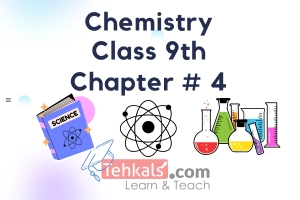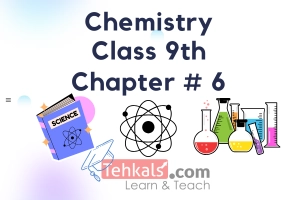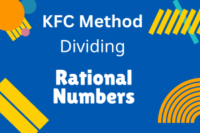Chemistry Class 9 Chapter 5
Published: 1 Oct 2023
Chemistry Class 9 Chapter 5 is about the “Physical States of Matter”. This article includes topics such as Gaseous State, Typical Properties of Gases (Indefinite Volume, Indefinite Shape, Diffusion, Effusion, Pressure, Compressibility, Density), Laws related to Gases, Boyle’s Law, Charles’s Law, Liquid State, Typical Properties of Liquids (Volume and Shape Evaporation, Vapour Pressure), Factors Affecting Vapour Pressure (Nature of Liquid, Intermolecular Forces, Size of Molecules, Temperature, Boiling Point, Freezing Point, Diffusion, Mobility, Density), Solid State, Typical Properties of Solids (Volume and Shape, Melting Point, Rigidity and Density), Types of Solids (Amorphous Solids, Crystalline Solids), Allotropy, Allotropes of Carbon (Structure of Diamond, Graphite, Buckyball)
Chemistry Class 9 Chapter 5 Notes
Physical States of Matter
Chemistry Class 9 Chapter 5-MCQs
Introduction
1. Anything that has mass and occupy space is ________(a) Matter
(b) Energy
(c) Photon
(d) Ion
Show Answer
Matter
2. How many states matter has ?
(a) 3
(b) 4
(c) 5
(d) 6
Show Answer
3
3. What are the types of matter ?
(a) Solid
(b) Liquid
(c) Gas
(d) All of them
Show Answer
4. All the three states of matter are _____ to one another :
(a) In equilibrium
(b) Inter-convertible
(c) Probable
(d) None of these
Show Answer
All of them
5. When the temperature of solid is increased it is converted into _______
(a) Solid
(b) Liquid
(c) gas
(d) None
Show Answer
Liquid
6. When the temperature of liquid is increased it is converted into _________
(a) Solid
(b) Liquid
(c) Gas
(d) None
Show Answer
Gas
7. Gas is the state of matter in which molecules are _______ from each other.
(a) Far away
(b) Near
(c) Away
(d) None
Show Answer
Far away
8. There is a weak ______ of attraction between gas molecules.
(a) Bond
(b) Intermolecular force
(c) Electrostatic force
(d) None of these
Show Answer
Intermolecular force
Gaseous State
9. The particles of gas are free to move in ______ with great speed.(a) Left to right
(b) Top to bottom
(c) All direction
(d) None of these
Show Answer
All direction
10. Gases occupy ______ volume of its container.
(a) Whole
(b) Half
(c) One third
(d) None of these
Show Answer
Whole
To Download Complete Notes of Class 9 Chemistry Notes, Click the link.
Typical Properties of Gases
Indefinite Volume
11. Gases have ______ volume and they will occupy all available spaces.(a) Definite
(b) Indefinite
(c) Both
(d) None
Show Answer
Indefinite
Indefinite Shape
12. _______ do not have definite shape.(a) Gases
(b) Solids
(c) Liquids
(d) None of these
Show Answer
Gases
Diffusion
13. Diffusion describes the movement of molecules from region of ________ concentration.(a) Lower to higher
(b) Higher to lower
(c) Lower to lower
(d) None of these
Show Answer
Higher to lower
14. Gases takes the shapes of the container in which it is _______
(a) Placed
(b) Not placed
(c) Both a and b
(d) None of these
Show Answer
Placed
15. Once molecules become evenly distributed throughout the medium, there will be _____ in any direction.
(a) Less diffusion
(b) More diffusion
(c) No diffusion
(d) None of these
Show Answer
No diffusion
16. Gas molecules are in _____ random motion.
(a) Variable
(b) Constant
(c) No motion
(d) None of these
Show Answer
Constant
17. The gas molecules diffuses very quickly and form a ______ mixture .
(a) Homogeneous
(b) Heterogeneous
(c) Rectilinear
(d) None of these
Show Answer
Homogeneous
18. The spontaneous mixing of molecules of different gases to form a homogeneous mixture by random motion and collision of molecules is called ________
(a) Mobility
(b) Diffusion
(c) Effusion
(d) None of these
Show Answer
Diffusion
19. In 1833_____discovered that a lighter gas can diffuse much faster than a heavier .
(a) Paulo coalhod
(b) Volkanovski
(c) Thomas graham
(d) None of these
Show Answer
Thomas graham
Effusion
20. The escape of molecule in the gasses state one by one without collision through a hole of ______ dimension is called effusion(a) Molecular
(b) Atomic
(c) Massive
(d) None of these
Show Answer
Molecular
21. You can smell onions even when the bag is tightly sealed, this is due to _______
(a) Diffusion
(b) Effusion
(c) Evaporation
(d) None of these
Show Answer
Effusion
Pressure
22. The force exerted by the gas on per unit area of a container is called _______(a) Pressure
(b) Mobility
(c) Density
(d) None of these
Show Answer
Pressure
23. The molecules of gas are in _________ state of motion.
(a) Line
(b) Spectral
(c) Continuous
(d) None of these
Show Answer
Continuous
24. The formula of the pressure is :
(a) P = A/F
(b) P = F/A
(c) P = FA
(d) None of these
Show Answer
P = F/A
25. The SI unit of pressure is ______
(a) $ N.m^{-2 } $
(b) $ N.cm^{-2} $
(c) $ Hertz $
(d) $ None \ of \ these $
Show Answer
$ N.m^{-2} $
26. The SI unit of pressure is also called_______
(a) Frequency
(b) Temperature
(c) Pascal
(d) None of these
Show Answer
Pascal
27. At sea level at $ 0^0 C $ , the atmospheric pressure is ______
(a) 360 mm Hg
(b) 760 mm Hg
(c) 760 mm Ag
(d) None of these
Show Answer
760 mm Hg
28. 760 mm of Hg is also called _______
(a) 760 Torr
(b) 760 mol
(c) 760 Na
(d) None of these
Show Answer
760 Torr
Compressibility
29. The change in volume per unit change in pressure is :(a) Mobility
(b) Density
(c) Compressibility
(d) None of these
Show Answer
Compressibility
30. ______ are highly compressible.
(a) Solid
(b) Gases
(c) Liquid
(d) None of these
Show Answer
Gases
31. This compressibility of gases is due to ____ empty spaces among gas molecules.
(a) Large
(b) Intermediate
(c) Small
(d) None of these
Show Answer
Large
32. When pressure is applied on gases, distance between the molecules decreases, its volume also ________
(a) increases
(b) Decreases
(c) Maximizes
(d) None of these
Show Answer
Decreases
Density
33. The mass per unit volume is called _____(a) Density
(b) Allotropy
(c) Effusion
(d) None of these
Show Answer
Density
34. Density can be mathematically written as :
(a) $ d = m/v $
(b) $ d = mv $
(c) $ P = F/A $
(d) None of these
Show Answer
$ d = m/v $
35. The density is _____ proportional to its volume.
(a) Directly
(b) Inversely
(c) Constant
(d) None
Show Answer
Inversely
36. The density of gas is very _____ as compared to the same amount of liquid or a solid .
(a) Low
(b) High
(c) Lit up
(d) All of them
Show Answer
Low
37. Gaseous oxygen has a density _____ at $ 0^0 C $.
(a) $ 0.00142 g/cm^3 $
(b) $ 1.00142 g/cm^2 $
(c) $ 5.00142 g/cm^3 $
(d) $ None \ of \ these $
Show Answer
0.00142 g/cm^3
38. Liquid oxygen has a density of $ 1.149 g/cm^3 $ at ______
(a) $ +100^0 C $
(b) $ -103^0 C $
(c) $ -252^0 C $
(d) None of these
Show Answer
$ -103^0 C $
Laws Related to Gases
Boyle’s Law
39. Boyle`s law was presented by Robert Boyle in _______(a) 1862
(b) 1762
(c) 1662
(d) 1962
Show Answer
1662
40 Robert Boyle gave the relationship volume and pressure of a gas at constant _______
(a) Temperature
(b) Pressure
(c) Volume
(d) Watt
Show Answer
Temperature
41. The volume of a given mass of gas is _______ proportional to the pressure at constant temperature is called Boyle `s law.
(a) Directly
(b) Inversely
(c) Statistically
(d) Non
Show Answer
Inversely
42. Mathematically , Boyle`s law can be written as
(a) $ PV = K_b $
(b) $ V/T = K_c $
(c) $ V \propto 1/p $
(d) None of these
Show Answer
$ V \propto 1/p $
43. $ K_b $ is called ______ of Boyle`s law.
(a) Constant
(b) Variable
(c) Predictable
(d) None of these
Show Answer
Constant
44. A $ 530 dm^3 $ sample of hydrogen gas collected in a container at 800 mm of Hg pressure at room temperature . what volume will the gas occupy at 400 mm of Hg ?
(a) $ 960 dm^3 $
(b) $ 1060 dm^3 $
(c) $ 1160 dm^3 $
(d) None of these
Show Answer
$ 1060 dm^3 $
Charles’s Law
45. In 1787, who gave the relationship between volume and temperature of gas at constant pressure ?(a) Jacques Charles
(b) Robert Boyle
(c) Robert Whittaker
(d) None of these
Show Answer
Jacques Charles
46. The volume of a given mass of a gas is directly proportional to the absolute temperature at constant pressure is called ________
(a) Boyle`s law
(b) Charles`s law
(c) Law of mass action
(d) None of these
Show Answer
Charles`s law
47. Mathematically, Charles law can be written as :
(a) $ V \propto T $
(b) $ V \propto P $
(c) $ V \propto 1⁄T $
(d) None of these
Show Answer
$ V \propto T $
48. The constant of Charles`s law is ______
(a) $ K_b $
(b) $ K_c $
(c) $ K_T $
(d) None of these
Show Answer
$ K_c $
49. The ________ between volume and absolute temperature of given mass of a gas at constant pressure .
(a) Product
(b) Algorithm
(c) Ratio
(d) None of these
Show Answer
Ratio
50. If $ 3 dm^3 $ of air is heated from $ 300 K $ to $ 400 K $ at constant pressure , then what is the volume of the gas at higher temperature ?
(a) $ 4 dm^3 $
(b) $ 4.5 dm^3 $
(c) $ 11.5 dm^3 $
(d) None
Show Answer
$ 4 dm^3 $
Liquid State
51. Liquid is a state of matter in which the intermolecular forces of attraction are ______ the gaseous state.(a) Stronger
(b) Weaker
(c) Similar
(d) None of these
Show Answer
Stronger
52. Liquid molecules have ______ energy.
(a) Potential
(b) Kinetic
(c) Force
(d) None of these
Show Answer
Kinetic
53. Liquid molecules have ______ motion .
(a) Random
(b) Rectilinear
(c) Curvilinear
(d) None of these
Show Answer
Random
Typical Properties of Liquid State
Volume and Shape
54. Liquid has a definite ________(a) Shape
(b) Volume
(c) Both a and b
(d) None
Show Answer
Volume
55. Liquid do not have a definite ______
(a) Shape
(b) Volume
(c) Both a and b
(d) None
Show Answer
Shape
Evaporation
56. The molecules of a liquid move with different ______(a) Potential energy
(b) Random motion
(c) Kinetic energy
(d) None of these
Show Answer
Kinetic energy
57. The molecules whose kinetic energies are higher can move _______
(a) Slower
(b) Intermediate
(c) Faster
(d) None of these
Show Answer
Faster
58. The conversion of liquid state into gaseous state is called _______
(a) Vapour pressure
(b) Evaporation
(c) Condensation
(d) None of these
Show Answer
Evaporation
Explanation:
Evaporation
59. The phenomenon in which a liquid is converted into vapour without _______ heating is called evaporation.
(a) External
(b) Internal
(c) Temperature
(d) None of these
Show Answer
External
60 Evaporation takes place at all ______
(a) Condition
(b) Temperature
(c) Energies
(d) None of these
Show Answer
Temperature
61 Evaporation cause ______
(a) Heating
(b) Boiling
(c) Cooling
(d) None of these
Show Answer
Cooling
62. Greater the surface area _______ will be the evaporation .
(a) Higher
(b) Lower
(c) Constant
(d) None of these
Show Answer
Higher
63. Lower the surface area _______ will be the evaporation.
(a) Higher
(b) Lower
(c) Constant
(d) None of these
Show Answer
Lower
64. With the increase in _______ , the kinetic energy of the molecule increases, so rate of evaporation increases.
(a) Condensation
(b) Boiling point
(c) Temperature
(d) None of these
Show Answer
Temperature
65. ______ the intermolecular forces, slow will be the rate of evaporation.
(a) Stronger
(b) Average
(c) Weaker
(d) None of these
Show Answer
Stronger
66. _______ the intermolecular forces, slow will be the rate of evaporation .
(a) Stronger
(b) Average
(c) Weaker
(d) None of these
Show Answer
Weaker
67. Different liquids have different rate of evaporation at the _______ temperature .
(a) Same
(b) Different
(c) Own
(d) None of these
Show Answer
Same
68. Water has strong intermolecular forces than _______ therefore alcohol can evaporate quickly than water.
(a) Benzene
(b) Alcohol
(c) Hexane
(d) None of these
Show Answer
Alcohol
Vapour Pressure
69. The pressure exerted by the vapours of the liquid when the rate of evaporation becomes equal to the rate of _____ is called vapour pressure.(a) Condensation
(b) Temperature
(c) Freezing point
(d) None of these
Show Answer
Condensation
70. When a liquid is placed in container, kinetic energies of all the molecules are _______
(a) Same
(b) Comparable
(c) Different
(d) None of these
Show Answer
Different
71. When rate of evaporation increases, the rate of condensation also ________
(a) Decreases
(b) Increases
(c) No change
(d) None of these
Show Answer
Increases
72. When the rate of evaporation becomes equal to the rate of condensation , this state is called an ______ state .
(a) Equilibrium
(b) Hyperbolic
(c) Allotropic
(d) None of these
Show Answer
Equilibrium
73. The pressure exerted by the vapours of a liquid in equilibrium state is called _______
(a) Diffusion
(b) Vapour pressure
(c) External pressure
(d) None of these
Show Answer
Vapour pressure
74. Polar liquid having high ______ points exert little vapour pressure at a given temperature.
(a) Boiling
(b) Melting
(c) Freezing
(d) None of these
Show Answer
Boiling
75. _________ liquids having low boiling points exert more vapour pressure at same temperature .
(a) Polar
(b) Non-polar
(c) Ionic
(d) None of these
Show Answer
Non-polar
76. Water has less vapour pressure then _____ at the same temperature.
(a) Acetone
(b) Ketone
(c) Acetic acid
(d) None of these
Show Answer
Acetone
77. Those liquids which have ______ size are easily evaporated.
(a) Large
(b) Moderate
(c) Small
(d) None of these
Show Answer
Small
78. The temperature which vapour pressure of liquid becomes equal to the atmospheric pressure is called _______
(a) Boiling point
(b) Melting point
(c) Freezing point
(d) None of these
Show Answer
Boiling point
79. ______ have higher boiling point.
(a) Non-polar
(b) Polar
(c) None
(d) None of these
Show Answer
Polar
80. In polar liquids, there are _____ intermolecular forces of attraction than non-polar liquids.
(a) Stronger
(b) Average
(c) Weaker
(d) None of these
Show Answer
Stronger
81. The external pressure is _______ proportional to the boiling point.
(a) Inversely
(b) Constant
(c) Directly
(d) None of these
Show Answer
Directly
82. At high attitude, the boiling point of a liquid will be less because ________ is lower.
(a) Internal pressure
(b) External pressure
(c) Diffusion
(d) None of these
Show Answer
External pressure
83. The temperature at which the liquid and solid state exists in equilibrium state is called ______ point .
(a) Freezing
(b) Boiling
(c) Melting
(d) None of these
Show Answer
Freezing
84. Diffusion in liquid is ______ than diffusion in gases.
(a) Faster
(b) Moderate
(c) Slower
(d) None of these
Show Answer
Slower
Solid State
85. In _______ state of matter the particles are closely packed in a fixed pattern.(a) Solid
(b) Liquid
(c) Gas
(d) None of these
Show Answer
Solid
86. Solid particles possess only _____ motion .
(a) Random
(b) Vibrational
(c) Rotational
(d) None of these
Show Answer
Vibrational
Typical Properties of Solids
Volume and Shape
Melting Point
Rigidity
Density
87. Solid state has a _____ shape and volume.(a) Definite
(b) Indefinite
(c) None
(d) None of these
Show Answer
Definite
88. The temperature at which the solid starts melting and exist in dynamic equilibrium with liquid state is called ____ point .
(a) Freezing
(b) Boiling
(c) Melting
(d) None of these
Show Answer
Melting
89. Which one has the higher density ?
(a) Solid
(b) Liquid
(c) Gas
(d) None of these
Show Answer
Solid
Types of Solids
Amorphous Solids
Crystalline Solids
90. The solid in which the particles are not arranged in ______ dimensions is called amorphous solid.(a) One
(b) Three
(c) Two
(d) Five
Show Answer
Three
91. All are the examples of amorphous solid EXCEPT :
(a) Glass
(b) Plastic
(c) Candy
(d) Diamond
Show Answer
Diamond
92. The solid in which particles are arranged in regular three dimensional pattern is called _____________
(a) Crystalline solid
(b) Amorphous solid
(c) Polymer
(d) None of these
Show Answer
Crystalline solid
93. ______ is the example of crystalline solid .
(a) Cotton
(b) Butter
(c) NaCl
(d) Rubber
Show Answer
NaCl
Allotropy
Allotropes of Carbon
Structure of Diamond
Structure of Graphite
Structure of Buckyball
94. The existence of an elements in more than one crystalline form is called ______(a) Allotropy
(b) Mobility
(c) Carbon dating
(d) None of these
Show Answer
Allotropy
95. The temperature at which one allotrope changes into another allotropic form is called ____ temperature .
(a) Allotropic
(b) Transition
(c) Crystalline
(d) None of these
Show Answer
Transition
96. Diamond , graphite , Bucky ball , soot are the examples of allotropes of ________ .
(a) Carbon
(b) Polonium
(c) Radon
(d) None of these
Show Answer
Carbon
Review Exercise Chapter # 5
97. The spontaneous mixing of particles is called :(a) Evaporation
(b) Sublimation
(c) Diffusion
(d) Boiling
Show Answer
Diffusion
98. Which statement for the particles of solid is not correct :
(a) They move at great speed
(b) They are arranged in regular pattern
(c) There is a very little space between the particles
(d) The force of attraction between the particles are strong
Show Answer
They move at great speed
99. A liquid boils when its vapour pressure becomes equal to :
(a) 760cm of Hg
(b) 1 Pascal
(c) 101.325 kilo Pascal
(d) 0.1 atm
Show Answer
101.325 kilo Pascal
100. The vapour pressure of a liquid increases with the :
(a) Increase of pressure
(b) Increase of temperature
(c) Increase of intermolecular force
(d) Increase of polarity of molecules
Show Answer
Increase of temperature
101. Water normally boils at $ 100^0C $ but it is possible to boil at $ 50^0C $ which variable would you have to change to do this :
(a) Increase external pressure
(b) Decrease external pressure
(c) Increase surface area
(d) Decrease surface area
Show Answer
Increase surface area
102. The vapour pressure of a liquid in a closed container depends upon :
(a) Amount of liquid
(b) Surface area of the liquid
(c) Temperature
(d) Both b and c
Show Answer
Temperature
103. Which one of the following is not an example of amorphous solid :
(a) Rubber
(b) Glass
(c) Glucose
(d) Plastic
Show Answer
Glucose
104. At freezing point which one of the following coexist inn dynamic equilibrium :
(a) Gas and solid
(b) Liquid and gas
(c) Liquid and solid
(d) All of these
Show Answer
Liquid and solid
105. Ink spreads inn water because of :
(a) Vapour pressure
(b) Expansion
(c) Diffusion
(d) Compressibility of water
Show Answer
Diffusion
106. What will be the pressure of gas , if the volume of the gas at 2 atmospheres it increased from $ 1.5 dm^3 $ to $ 3 dm^3 $
(a) 1 atmosphere
(b) 1.5 atmosphere
(c) 2 atmosphere
(d) 2.5 atmosphere
Show Answer
1 atmosphere
Chemistry Class 9 MCQs (All Chapters)

- Be Respectful
- Stay Relevant
- Stay Positive
- True Feedback
- Encourage Discussion
- Avoid Spamming
- No Fake News
- Don't Copy-Paste
- No Personal Attacks



- Be Respectful
- Stay Relevant
- Stay Positive
- True Feedback
- Encourage Discussion
- Avoid Spamming
- No Fake News
- Don't Copy-Paste
- No Personal Attacks





